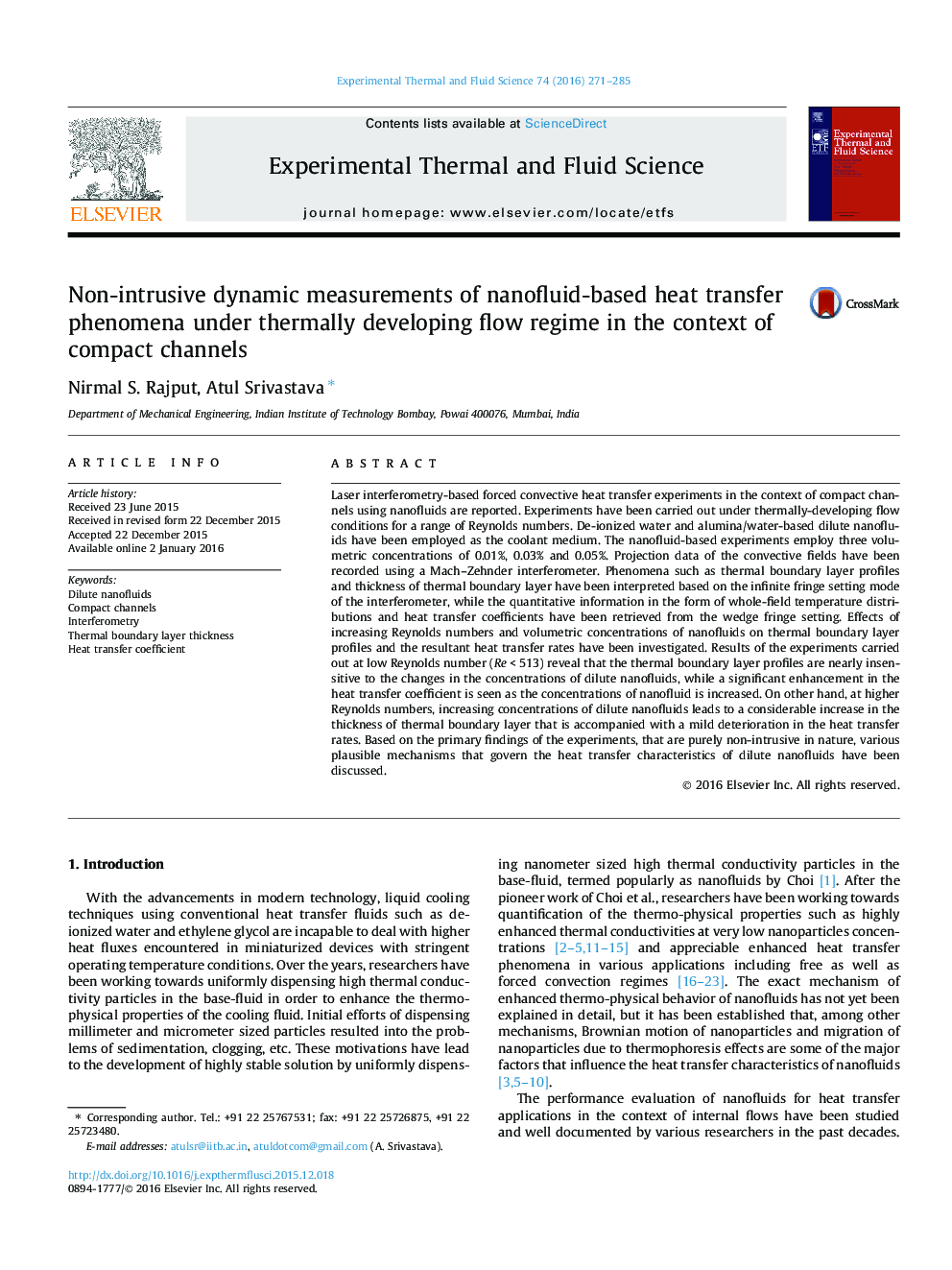| کد مقاله | کد نشریه | سال انتشار | مقاله انگلیسی | نسخه تمام متن |
|---|---|---|---|---|
| 651203 | 1457402 | 2016 | 15 صفحه PDF | دانلود رایگان |
• Optical and dynamic measurements of nanofluids-based heat transfer coefficients.
• Heat transfer phenomena in thermally developing flow in compact channels.
• Visualization of convective field using Mach Zehnder interferometer.
• Plausible physical mechanisms associated with nanofluids.
Laser interferometry-based forced convective heat transfer experiments in the context of compact channels using nanofluids are reported. Experiments have been carried out under thermally-developing flow conditions for a range of Reynolds numbers. De-ionized water and alumina/water-based dilute nanofluids have been employed as the coolant medium. The nanofluid-based experiments employ three volumetric concentrations of 0.01%, 0.03% and 0.05%. Projection data of the convective fields have been recorded using a Mach–Zehnder interferometer. Phenomena such as thermal boundary layer profiles and thickness of thermal boundary layer have been interpreted based on the infinite fringe setting mode of the interferometer, while the quantitative information in the form of whole-field temperature distributions and heat transfer coefficients have been retrieved from the wedge fringe setting. Effects of increasing Reynolds numbers and volumetric concentrations of nanofluids on thermal boundary layer profiles and the resultant heat transfer rates have been investigated. Results of the experiments carried out at low Reynolds number (Re < 513) reveal that the thermal boundary layer profiles are nearly insensitive to the changes in the concentrations of dilute nanofluids, while a significant enhancement in the heat transfer coefficient is seen as the concentrations of nanofluid is increased. On other hand, at higher Reynolds numbers, increasing concentrations of dilute nanofluids leads to a considerable increase in the thickness of thermal boundary layer that is accompanied with a mild deterioration in the heat transfer rates. Based on the primary findings of the experiments, that are purely non-intrusive in nature, various plausible mechanisms that govern the heat transfer characteristics of dilute nanofluids have been discussed.
Journal: Experimental Thermal and Fluid Science - Volume 74, June 2016, Pages 271–285
